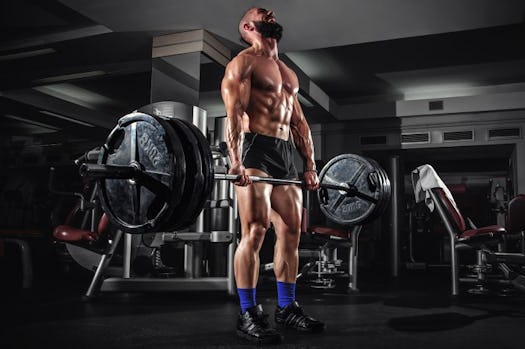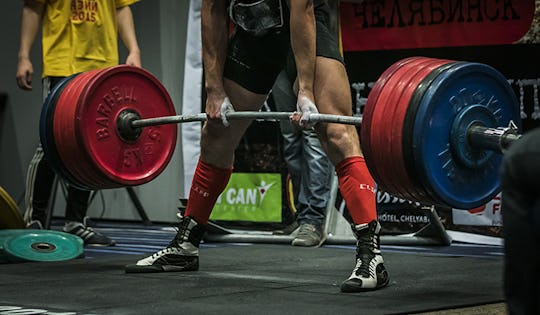Before I get into the meat of the article, it’s important to first address why should someone deadlift. At its most fundamental level, learning to deadlift is learning to pick things up off the floor safely and efficiently. This is a necessary life skill that everyone should possess. Using incorrect technique when picking something up can result in an injury that can be avoided easily by using correct technique.
Even if you never have aspirations to deadlift double your bodyweight, you will still benefit from being able to lift your heavy suitcase, a box of books, or help your buddy move his couch. In addition to being a valuable life skill, training the deadlift is a fantastic way to build muscle and total body strength. But there are two ways to train your deadlift: with a barbell or a trap bar.
Differences in Deadlifts
The biggest difference between the two bars is the trap bar allows you to bend your knees more while still maintaining the weight in the proper position relative to your body. If you tried to bend your knees that much with a straight bar, you’d have poor leverage and you’ll put too much stress on your lower back. Who does this affect? Generally, it affects
1.) Lifters who don’t have the mobility to hinge with a nearly vertical shin.
2.) Tall lifters who, even if they are flexible, can still have a hard time with their long levers.
A straight bar requires you to lift in the classic “hinge position” with a nearly vertical shin bone, while the trap bar allows you to lift in either the hinge position or with more knee bend. If you are flexible enough to hinge properly, then you can use either bar. If you are still working on your flexibility, the trap bar may be a better choice. If you are tall, the trap bar could be a good option because many of them have a second set of higher handles, so you won’t have to excessively hinge.
Note: If you choose to use a lot of knee bend in your trap bar deadlift, a larger portion of the work will be from your quads. If you are looking to bring up your leg strength this can be good, but if hip drive is your priority then try to avoid it.
Different Deadlift Different Grip
The demands on your grip are also different between the bars. With the trap bar, your palms face each other, and your shoulders and wrists are in neutral positions, resulting in you having a very strong grip on the bar. The straight bar allows you to use either a double overhand (hardest on the grip, but excellent for developing grip strength) or a mixed grip where one hand is overhand and the other is the opposite (stronger than double overhand).
The mixed grip is used on the straight bar to make it harder for the bar to slip out of your hands. Since your hands are facing different directions, the bar can’t easily roll out. If you are involved in a sport that benefits from a strong grip (BJJ, MMA, climbing, etc), then the double overhand deadlift is an excellent choice for your training.
The “lockouts”, or finish positions, of the lifts, also have subtle differences. In both cases, you should be standing up tall with a neutral spine, and your glutes squeezed tight and knees locked. The difference is that while the straight bar is pulled in tight against your upper thighs, the trap bar is not braced against your body, sometimes resulting in the weight swinging a little bit. This makes the finish position of the straight bar more stable than that of the trap bar.
This can also manifest itself when doing multiple reps in a set. Let’s say you are doing a set of 5 deadlifts. With a straight bar, you have a brief pause at the top with the bar pulled in tight against your body, thus giving you a repeatable point from which to start your next rep. With the trap bar, this position doesn’t exist since the bar is never against your body, making it harder to have as many identical reps within a set.
Benefits to the Straight Bar Deadlift
First off – accessibility. Just about any gym, you’ll ever go to will have a barbell and weights. If you travel a lot, this allows your training to be much more consistent than if you were reliant on special/unusual equipment like a trap bar. Second, it allows you to compare yourself to others and gauge your progress easily. The deadlift (with a straight bar) is a contested lift in powerlifting and is a common lift all over the world, so if you want to see where you stack up next to everyone else, the straight bar deadlift offers the best comparison.
Both the straight bar deadlift and the trap bar deadlift are excellent lifts, and it would be near impossible to definitively say that one is better than the other. It is really all about choosing the right tool for the job. Just like you wouldn’t blame a screwdriver for being a bad hammer, don’t blame one exercise for not doing something it was never designed to do.
Benefits to the Trap Bar Deadlift
Benefits of the trap bar are that it has a smaller learning curve, it is more accommodating to lifters that have low mobility, and it can be helpful in teaching leg drive. Long term success with deadlifts using a barbell is dependent on learning to use the hips well (both for mobility and strength). Plus, a straight bar can be a great grip strength developer and can allow for more consistent reps within a set.





)





